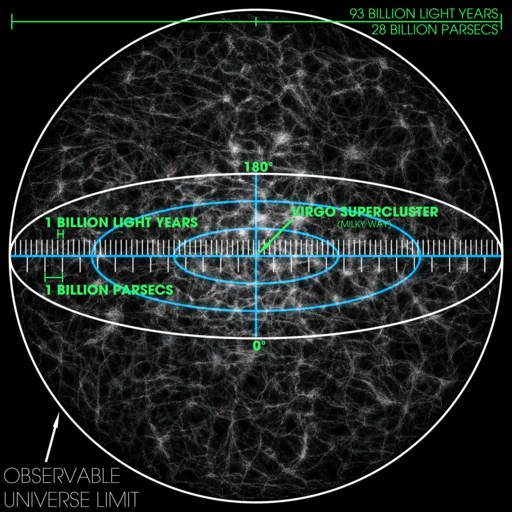Glossary |
Observable Universe |
updated: 2022-07-19 |
Observable Universe
In the standard model of cosmology, the observable universe is that part of the universe which, in principle, is accessible to our observation from the earth. Assuming that the universe is isotropic, the observable universe from Earth has the shape of a sphere with the observer on Earth at the center. This is independent of the shape of the universe as a whole. There are different approaches to determine the radius of this sphere. Each location has its own observable universe, which may or may not overlap with another's.
The observation horizon limits the part of the universe from which information may have reached us since the Big Bang.
One might now assume that this observation horizon is at a distance equal to the age of the universe times the speed of light, i.e. 13.8 billion light years. But that's not the case. Because of the Cosmological Expansion at the beginning of the universe, when space expanded at tens of times the speed of light as light traveled from the observing horizon to Earth, the distance from Earth to the observing horizon is now calculated at 46.6 billion light years.
The most distant objects whose light we can see today were just 40 million light-years from Earth at the time they emitted that light - slightly closer than what was then the event horizon. Today we are separated from these objects by said 46.6 billion light years. But since they've long since passed the event horizon, there's no way we'll ever know what's going on at that distance. The ratio of these distances is the factor in the expansion of the universe over this period and is also the Redshift.
For more details see. Wikipedia and Our Cosmic Location
Created with the Personal Edition of HelpNDoc: Single source CHM, PDF, DOC and HTML Help creation

